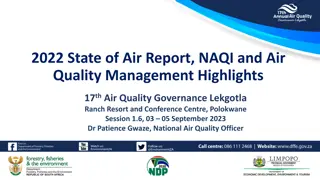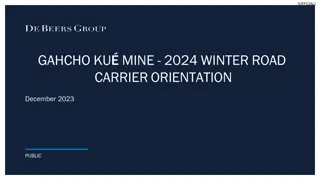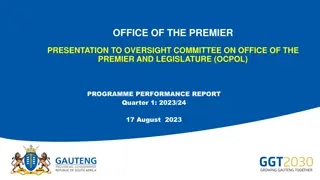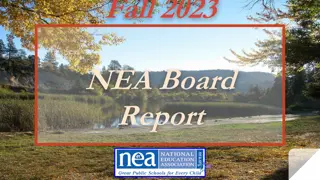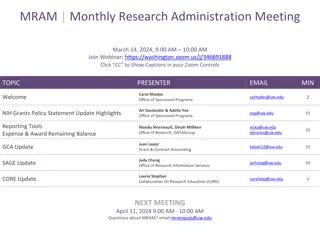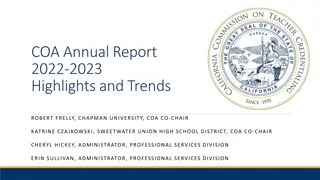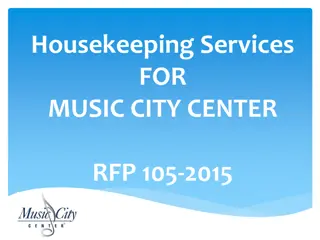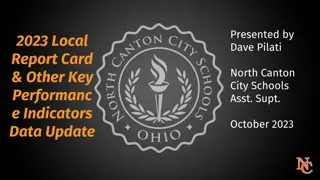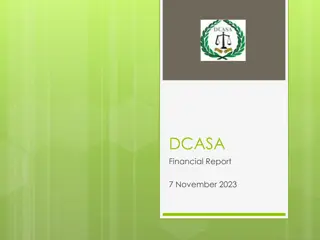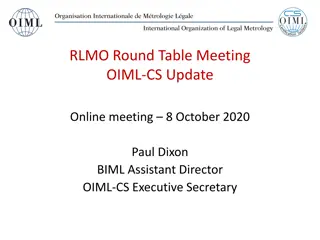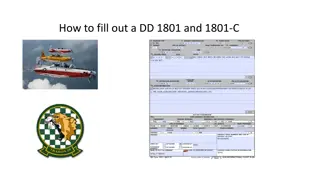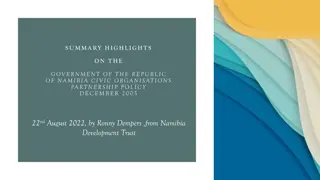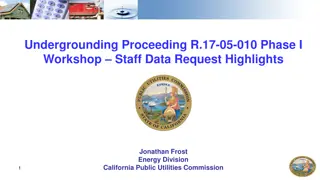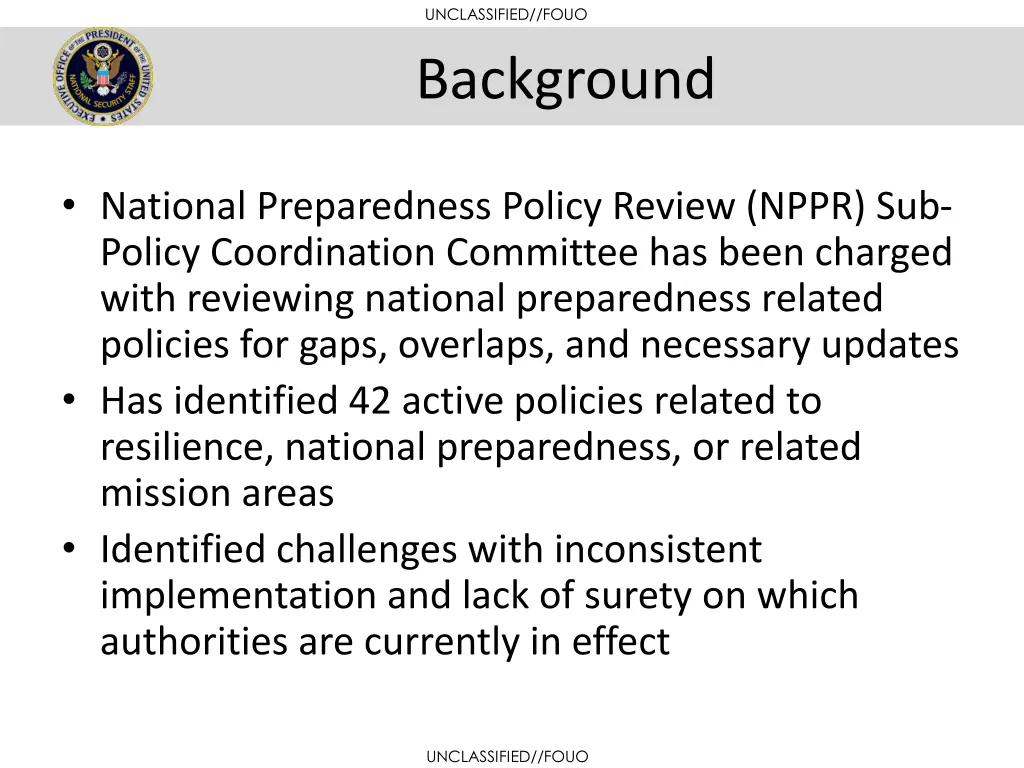
National Preparedness Policy Review and Recommendations
The National Preparedness Policy Review (NPPR) Sub-Policy Coordination Committee has identified 42 active policies related to resilience and national preparedness, highlighting challenges in implementation and clarity of authorities. Emerging recommendations aim to clarify domestic incident response roles, integrate preparedness mission areas, enhance risk management, and synchronize planning for continuous improvement. Efforts focus on clarifying roles and responsibilities, fostering integration, utilizing risk management principles, and improving national resilience strategies.
Download Presentation

Please find below an Image/Link to download the presentation.
The content on the website is provided AS IS for your information and personal use only. It may not be sold, licensed, or shared on other websites without obtaining consent from the author. If you encounter any issues during the download, it is possible that the publisher has removed the file from their server.
You are allowed to download the files provided on this website for personal or commercial use, subject to the condition that they are used lawfully. All files are the property of their respective owners.
The content on the website is provided AS IS for your information and personal use only. It may not be sold, licensed, or shared on other websites without obtaining consent from the author.
E N D
Presentation Transcript
UNCLASSIFIED//FOUO Background National Preparedness Policy Review (NPPR) Sub- Policy Coordination Committee has been charged with reviewing national preparedness related policies for gaps, overlaps, and necessary updates Has identified 42 active policies related to resilience, national preparedness, or related mission areas Identified challenges with inconsistent implementation and lack of surety on which authorities are currently in effect UNCLASSIFIED//FOUO
UNCLASSIFIED//FOUO Emerging Recommendations NPPR Sub-PCC will make a series of recommendations to the Domestic Resilience Group (DRG) PCC Clarify domestic incident response roles and responsibilities Foster integration between preparedness mission areas Enhance the use of risk management principles Utilize exercises and evaluations for continuous improvement Synchronize planning UNCLASSIFIED//FOUO
UNCLASSIFIED//FOUO Clarify Roles and Responsibilities Provide clarity regarding the lead and supporting federal agencies for all non- Stafford Act emergencies Define the role of Sector Coordinating Councils during response and recovery operations and activities Map out policies - numerous directives, orders, and other policies have created a web of overlapping missions and authorities UNCLASSIFIED//FOUO
UNCLASSIFIED//FOUO Integrate Preparedness Mission Areas Explore developing a National Resilience Strategy Improve the integration of national preparedness training and education systems across the five mission areas Identify programs and investments that can foster recovery from disasters while mitigating potential future impacts focus on return on investment for risk management UNCLASSIFIED//FOUO
UNCLASSIFIED//FOUO Enhance Risk Management Improve the Threat and Hazard Identification and Risk Assessment process to produce a better understanding of national risks and hazards, as well as preparedness strengths and gaps across mission areas Articulate how core capabilities are used to manage identified risks Align risk management to performance of essential functions across mission areas UNCLASSIFIED//FOUO
UNCLASSIFIED//FOUO Foster Continuous Improvement Develop and promulgate policy on national exercises Document evaluation methods in each mission area Provide a baseline of national preparedness training and education across all mission areas UNCLASSIFIED//FOUO
UNCLASSIFIED//FOUO Synchronize Planning at All levels Utilize common planning assumptions Advance integrating emergency management, law enforcement, firefighting, emergency medical services, and other stakeholders horizontally within communities, and vertically with capabilities at the state and federal levels Foster common data dictionaries and information sharing agreements Protect sensitive information so that all partners actively identify and share relevant risk information UNCLASSIFIED//FOUO




